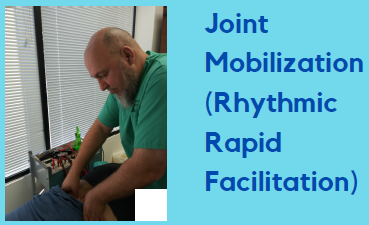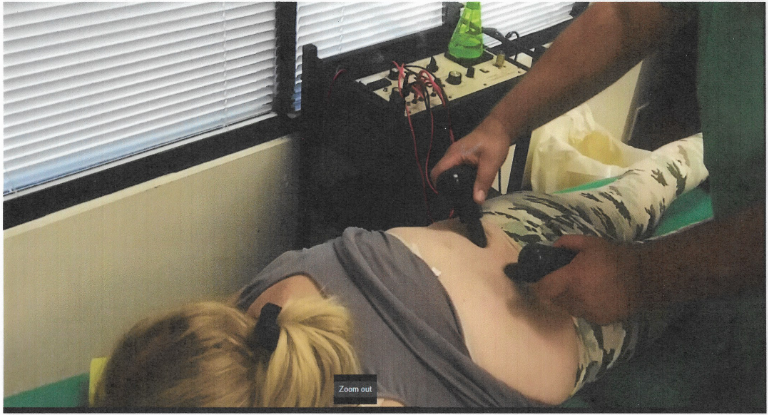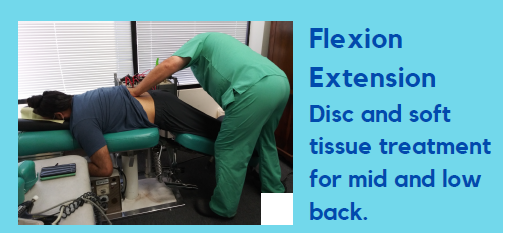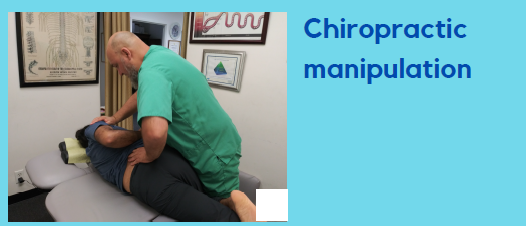|
Low back pain can be debilitating, affecting your ability to perform daily tasks and enjoy a good quality of life. While there are various treatments available, a comprehensive approach that combines different therapies can often yield the best results. Post-isometric resistance, Contrastrain Facilitation Release Technique (CFRT), joint mobilization, flexion-extension table traction, electric therapy, and heat therapy are all valuable modalities that, when combined, can provide significant relief for low back pain. Let's explore how each of these therapies contributes to the overall management of this common condition: Post-Isometric Resistance and the Birthing Technique: Post-isometric resistance (PIR) is a stretching technique that helps improve muscle flexibility and reduce tension. PIR can target specific muscles in the low back and upper back, helping to alleviate pain and improve range of motion. The Birthing Technique is a gentle manual therapy approach that involves rocking motions to release tension and improve mobility. When combined, these techniques can help address muscle imbalances and promote relaxation in the low back and upper back. Combined Benefits: When combined with other modalities, the Birthing Technique can enhance the overall effectiveness of the treatment plan. It helps improve muscle flexibility, reduce tension, and promote relaxation, which can aid in pain relief and improve mobility. Contrastrain Facilitation Release Technique (CFRT): CFRT is a gentle manual therapy approach that involves finding and releasing tender points in the muscles and fascia. This technique helps reduce muscle tension and improve range of motion in the low back. CFRT can be particularly effective in reducing pain and improving mobility in the lumbar spine. Heat Therapy: Applying heat relaxes muscles, improves blood flow, and reduces pain and stiffness. It prepares the low back for other treatments and enhances their effectiveness. Short Wave Diathermy: Short wave diathermy uses electromagnetic energy to generate heat deep within tissues. It can help reduce pain, improve circulation, and promote healing in the low back. Short Wave Diathermy vs. Heat Therapy: Short wave diathermy differs from regular heat therapy in its depth of penetration and the nature of the heat generated. While both modalities provide heat to the tissues, short wave diathermy can penetrate deeper into the body, reaching tissues several centimeters below the skin's surface. This deeper penetration allows for more effective heating of deep muscles and tissues, making it particularly beneficial for conditions like low back pain where deeper tissues are involved. Joint Mobilization: Joint mobilization is a hands-on technique used by chiropractor to improve joint mobility and reduce stiffness. For low back pain, joint mobilization can help restore normal movement patterns and reduce pain. This technique can be particularly beneficial for individuals with restricted spinal mobility or facet joint dysfunction. Flexion-Extension Table Traction; Using a specialized table, this technique decompresses spinal discs, reduces nerve pressure, and improves spinal alignment. It can provide relief and improve mobility in the low back. Cupping Therapy and electric therapy: Combining cupping therapy and electric therapy can offer unique benefits for pain management, muscle relaxation, improved circulation, and enhanced healing. Cupping therapy increases blood flow and reduces inflammation, while electric therapy disrupts pain signals and promotes muscle function. Together, they provide comprehensive relief for conditions like muscle strains, arthritis, and tendonitis. This combination is particularly beneficial for athletes and those recovering from injuries. Consult your chiropractor personalized advice. Massage Therapy: Massage therapy involves manipulating the soft tissues of the body to improve circulation, reduce muscle tension, and promote relaxation. In the context of low back pain, massage can help relieve muscle tightness and spasms, improve range of motion, and reduce pain. It can also enhance the effects of other therapies by preparing the muscles for treatment and aiding in recovery. Chiropractic Manipulation: Chiropractic manipulation, also known as spinal adjustment, involves applying controlled force to the spine to restore proper alignment and function. This technique can help improve joint mobility, reduce pain, and enhance overall spinal health. For low back pain, chiropractic manipulation can target specific areas of dysfunction, such as misaligned vertebrae or restricted joints, to alleviate pain and improve function. Conclusion: In conclusion, a multimodal therapy approach that includes chiropractic manipulation, post-isometric resistance, CFRT, joint mobilization, flexion-extension table traction, electric therapy, heat therapy, short wave diathermy, and massage therapy can effectively manage low back pain. This comprehensive approach addresses the underlying causes of pain, promotes healing, and improves function. If you are experiencing low back pain, consult with your chiropractor to determine the most suitable combination of therapies for your specific condition.
0 Comments
Leave a Reply. |
New Patient SpecialArchives
July 2024
Categories |









 RSS Feed
RSS Feed
